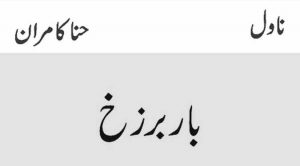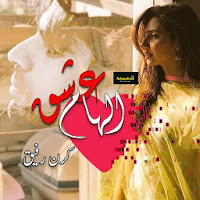Kesari Chapter 2 Review: Ahistorical, But Entertaining
If you disregard history and are ready to watch Kesari 2 purely as an entertainer, you are definitely going to enjoy it, notes Utkarsh Mishra.

The title of Akshay Kumar’s latest period drama Kesari Chapter 2 claims to reveal ‘the untold story of Jallianwala Bagh’. But the very first line of its long disclaimer calls it a ‘pure work of fiction’.
This clears the doubts of those who were wondering which story of Jallianwala Bagh remained untold even after 106 years. Of course, a pure work of fiction is automatically an untold story.
Just that it uses some real-life characters and events and also claims to be ‘based on’ the book The Case That Shook the Empire by Raghu Palat, a great-grandson of Sir C Shankaran Nair, and Pushpa Palat.
Honestly, I did not find anything in the movie that seemed ‘based on’ that book, except for the fact that there was a prominent Indian lawyer and jurist named Sir C Sankaran Nair, and he fought a court case that revolved around the happenings in Punjab under martial law in 1919, especially the Jallianwala Bagh massacre.
Sometimes, it feels personally insulting that mainstream Bollywood still thinks that if it doesn’t dramatise a story, doesn’t portray things in a clear black-and-white manner, doesn’t tell the viewers when to cry and when to applaud (by way of the often-ridiculous background score), then the audience will not enjoy or even understand the film appropriately.
And so begins Kesari 2, with the poignant and infuriating scenes of Jallianwala Bagh on April 13, 1919.
The beginning is really impactful and gives you a lump in the throat.
A background voice informs the viewers how, during the Great War, Indians helped the British Raj in the hope of getting their freedom in return.
But the Crown cheated them by extending the emergency powers instead, by way of the Rowlatt Act.
It threw Punjab, which had supplied the largest number of soldiers in the war, into disorder, and a large number of protests and demonstrations broke out.
To quell these protests, Brigadier General Reginald Dyer ordered his soldiers to open fire at the crowd assembled at Jallianwala Bagh to celebrate Baisakhi, while a non-violent protest against the Rowlatt Act was also going on.
It contrasts the scenes of the massacre and its aftermath with the life of Sir Sankaran (played by Akshay Kumar), shown as a loyal advocate of the Crown who is knighted for his services. Sir Sankaran does not believe in revolutionary movements and is shown helping the government convict revolutionary leaders.
His moment of epiphany comes when, as a member of the Viceroy’s Executive Council, he is called upon to join a commission of inquiry into the Jallianwala Bagh incident, and his reservations are sidelined.
A conscience-stricken Nair ‘sues the Empire for genocide’ with the help of a woman lawyer, played by Ananya Panday. The British engage another accomplished lawyer, played by R Madhavan, to ‘defend the Empire’, helped by the fact that he holds a personal grudge against Sir Sankaran.
From here, the film proceeds just like any other courtroom suspense thriller, with legal maneuvers and stunning revelations eliciting claps and cheers from the audience.
Sir Sankaran eventually loses, because the judge and jury have all been either threatened or lured by the higher officials.
However, he plays a trick to bring out ‘the truth’ that leads to General Dyer and Michael O’Dwyer, the then lieutenant governor of Punjab, to face the consequences of their actions.
The story has been told quite forcefully, and I must admit that if I didn’t know anything about the subject, I would have really enjoyed it, as did others in the theatre. There were several moments where people clapped, cheered, laughed and shed tears.
Thus, the film is a pure entertainer.
There are multiple scenes that are very well shot and deserve admiration.
As regards its historical accuracy, the director, producers and writers have indemnified themselves by calling it a work of fiction based on real events. But at the end, just before the credits roll, there come several slides that show what happened to the personalities portrayed in the film: Sir Sankaran, Dyer and O’Dwyer.
In my opinion, this is akin to insinuating that people were watching history so far, and so, effectively nullifies that disclaimer.
The inspiration for the script is the famous case of Nair v. O’Dwyer, which was a defamation suit filed in the high court of London by O’Dwyer against Sir Sankaran for calling him responsible for the atrocities in Punjab in 1919, in his book Gandhi and Anarchy.
The movie uses some real names from this incident and cooks up a story around them, like those of Judge Henry Alfred McCardie and Professor Harold Laski.
McCardie is initially shown as sympathetic to Indians, but eventually sides with the Crown, lured by an offer of promotion as a judge of the London high court. That is, of course, far from the truth because McCardie never served in any Indian court and was already a high court judge at the time of this case. And he was certainly not sympathetic to Indians.
Rather, he was quite opinionated in favour of O’Dwyer and General Dyer and believed that their actions ensured the security of the Empire.
It was his forceful interjections during the trial that led Professor Laski, a member of the jury, to cast the only dissenting vote in the case — a vote that ensured Nair was not handed a decisive defeat and opened a way for a compromise, as part of which O’Dwyer dropped his demand for a public apology from Nair.
This brings us to the portrayal of Professor Laski in the movie. Wrongly referring to him as ‘Mr Laksi’, Akshay Kumar’s Nair insinuates that he and a couple of other members of the jury were paid to change their vote in General Dyer’s favour.
It was at this point that the movie stopped being entertaining for me.
It is one thing to write a fictional script based on true events. It is completely another to twist the events so thoroughly and malign a person of high standing like Professor Laski, who had a much more favourable opinion of the Indian freedom movement.
Moreover, although O’Dwyer v. Nair became a sensational case and was widely reported in the media — both British and Indian — and it was due to these reports that many people came to know about the horrors committed in Punjab under martial law, it was not the consequence of this case that led to action being taken against General Dyer.
After the massacre, a formal inquiry, known as the Hunter Commission, condemned Dyer’s actions as a grave error and an excessive use of force.
Despite some British public support that led to a fund being raised in his favour, Dyer was met with official censure. He was relieved of his command, forced to resign, and barred from future employment in India.
All of this happened before the O’Dwyer v. Nair case.
Moreover, contrary to what the movie tries to show — that the people of India were kept in the dark about the incident until Nair decided to sue the Empire — there was considerable backlash both in India and Britain against Dyer’s actions.
Prominent leaders and intellectuals, including Rabindranath Tagore, who renounced his knighthood in protest (though Sir Sankaran did not), and Mahatma Gandhi, condemned the massacre, labeling it inhumane and unjust.
Edwin Montagu, the secretary of state for India, and even Winston Churchill, publicly denounced the event, the latter calling it ‘monstrous’ in the House of Commons.
The Indian National Congress had also constituted an inquiry committee to investigate the massacre and the brutal repression in Punjab, following widespread dissatisfaction with the official Hunter Commission.
Its findings revealed extensive abuse of power by the British authorities, including indiscriminate firing on unarmed civilians in Amritsar, public flogging, forced crawling, and other humiliating punishments under martial law.
The report strongly condemned General Dyer’s actions as inhumane and unjustified, asserting that no rebellion existed to warrant such cruelty.
By exposing the scale of the atrocities and racial discrimination, the inquiry played a critical role in rallying Indian public opinion against colonial rule and strengthening the foundation of the national movement.
Nonetheless, if you disregard history and are ready to watch Kesari 2 purely as an entertainer, you are definitely going to enjoy it.
The rating below is only because of this fact.
Kesari Chapter 2 Review Rediff Rating:
















Post Comment